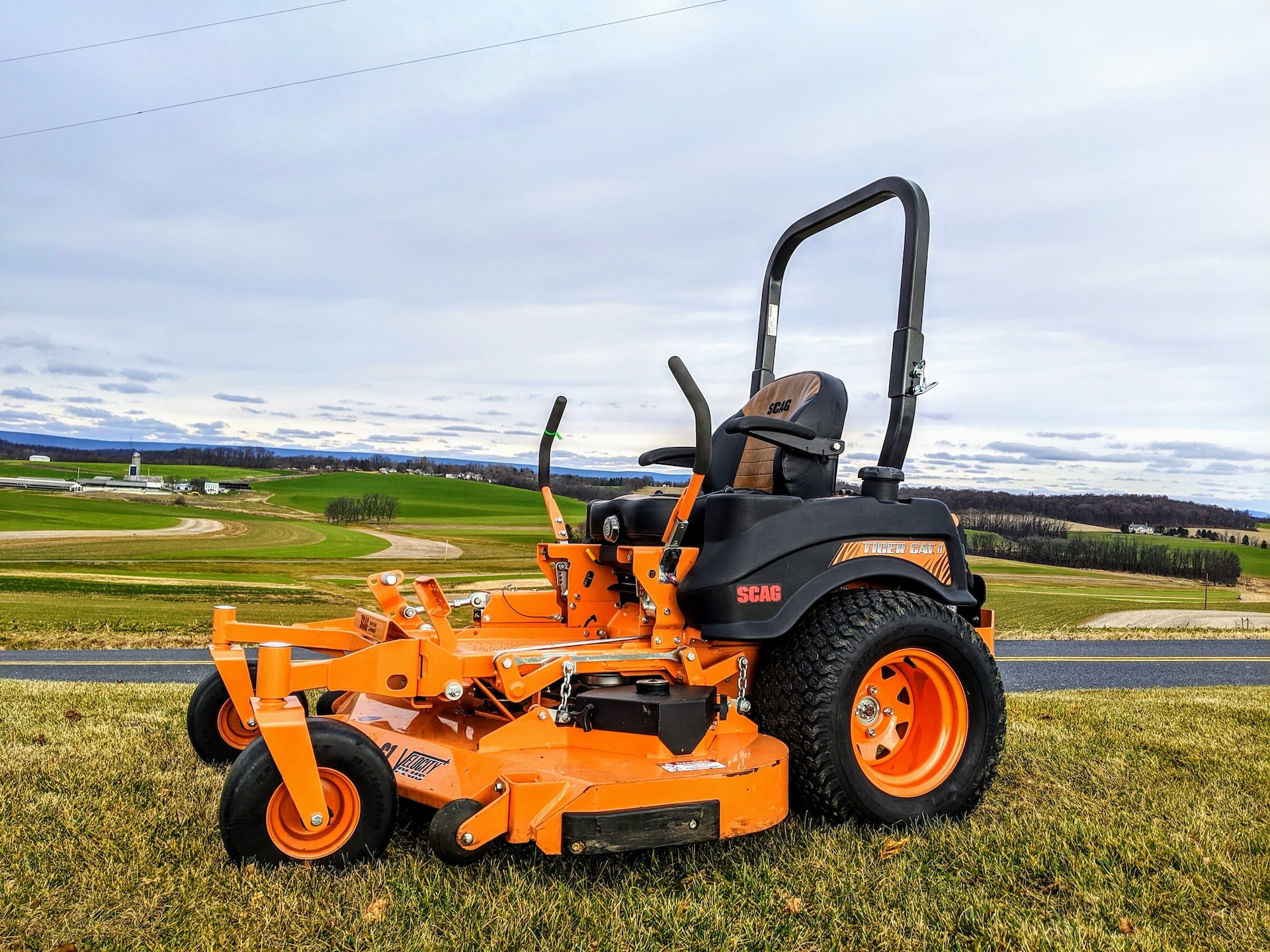Since most zero turn mowers don’t have a steering wheel, you might be left wondering “How does a zero turn mower work?” The answer is a surprisingly efficient redesign of the common riding mower.
While the origin of the zero turn mower has been claimed to be invented by several different manufacturers, for this article we’re merely discussing how a zero turn mower works.
If you’re unfamiliar, the moniker of the zero turn is because it does just that – the entire machine can turn in a zero degree arc.
Unlike the traditional riding lawn mower, a zero turn can turn completely around leaving no swath of grass uncut.
The benefit of this design is dramatic. Some claims from users tout up to a 70% decrease in time spent cutting the grass. More grass per cut equals less cuts and less time.
So, How Does a Zero Turn Mower Actually Work?
A zero turn mower has an engine just like a riding mower. The difference lies in the transmission and drive system.
The typical riding lawn mower is rear wheel driven, and it pivots on the front wheels for turning. The zero turn pivots on the rear wheels.
It accomplishes this by having two separate drive motors – one for each front wheel.
In order to operate the drive motors, hand levers are used instead of a steering wheel.
To go forward, both levers are pushed forward. The harder you push, the faster the machine will go. To go backwards is just the opposite; if both levers are pulled back the machine will go backwards.
For a gentle lefthand turn, the right hand lever is pushed forwards slightly more than the lefthand lever. The opposite is true for a gentle righthand turn.
To turn completely around, or to make a more dramatic lefthand turn, the lefthand lever is kept in the neutral position, and the righthand lever is pushed forward.
Again, the opposite is true for a righthand turn; the righthand lever is kept in neutral and the lefthand lever is pushed forward.
Advantages of a Zero Turn Mower
The main advantage of a zero turn mower is efficiency. Because it doesn’t “waste” cuts by making more cumbersome turns, a significant time savings is incurred.
Zero turns are also more adept for tight lawns with more curves because they’re easier to turn. This can also lead to fuel savings by not running the machine as long.
In terms of the environmental aspect, this fuel savings also decreases fuel emissions output.
Some zero turn mowers are rated for cuts up to a 15 degree incline.
Disadvantages of a Zero Turn Mower
The main drawback of a zero turn mower is cost. While there are varying degrees of cost for both machines, expect a zero turn to cost almost twice as much as a riding mower.
While a zero turn operates as speeds faster than a traditional riding mower, that comes with a price. All things considered equal, a slower cut equals a better cut; cutting faster doesn’t generally leave as good of a cut.
Lastly, operating a zero turn mower comes with a bit of a learning curve. Since it doesn’t have a steering wheel, getting used to the hand levers can take some time to get comfortable.
Recap
Ultimately, whether you choose to purchase a zero turn or a traditional riding mower depends on your lawn and your budget. Either way, at least now you know how a zero turn mower works.
As an Amazon Associate I earn from qualifying purchases.
